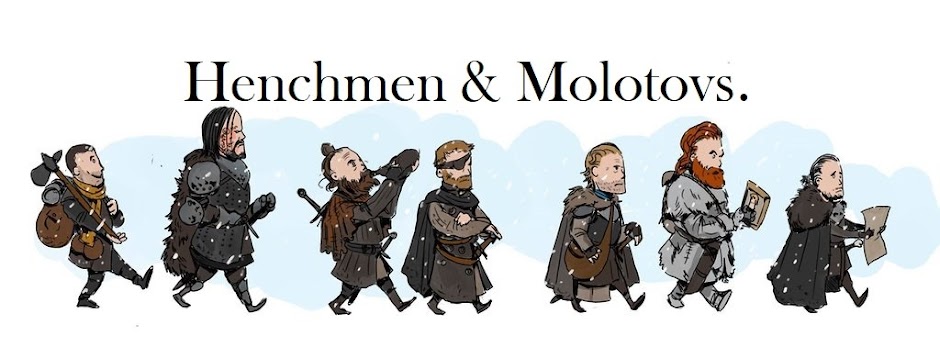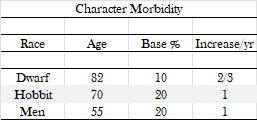We presume that the character has made it to majority. For Men and Hobbits, this is age 16-21 on March 1st their first year, unless the player decides to make them older.
When the character then enters play, we generate its birthdate with 1d12 for the month, followed by 1d32 for the day of the month. (Use this dice roller.) If these rolls result in a date that doesn't exist in real life, then the player will pick the birthdate. The character was born under an auspicious star. It gets a +1 CHA and +1 to all saves permanently.
Regardless of the figure's actual birthdate, the calendar matriculates on March 1, the start of the spring season. The character gains a year and we check for aging effects.
At Middle Age, add 1 to each mental stat and subtract 1 from each physical stat. At each subsequent age category, subtract 1 from each physical stat.
When a character is old, the Referee shall throw each spring to see if they will die in the following winter. If so, he will throw to set the date of death. Both of these throws will be held in secret. (It makes sense though for the Ref to mark that day on the calendar. When it approaches, you may want to tell the player beforehand so it is not a complete surprise.)
Starting at age 55, Men have a 20% chance to die of old age the following winter. That chance goes up 1% every subsequent year.
Dwarfs start getting old at 82. At that age, they have a 10% chance to die the following winter, which increases by 2 every third year.
Elfs do not have natural morbidity.
Starting at age 70, Hobbits have a 20% chance to die the following winter. That chance goes up 1% every subsequent year.
A character who is slated to die will die d% days after November 30.




No comments:
Post a Comment
Stay focused.